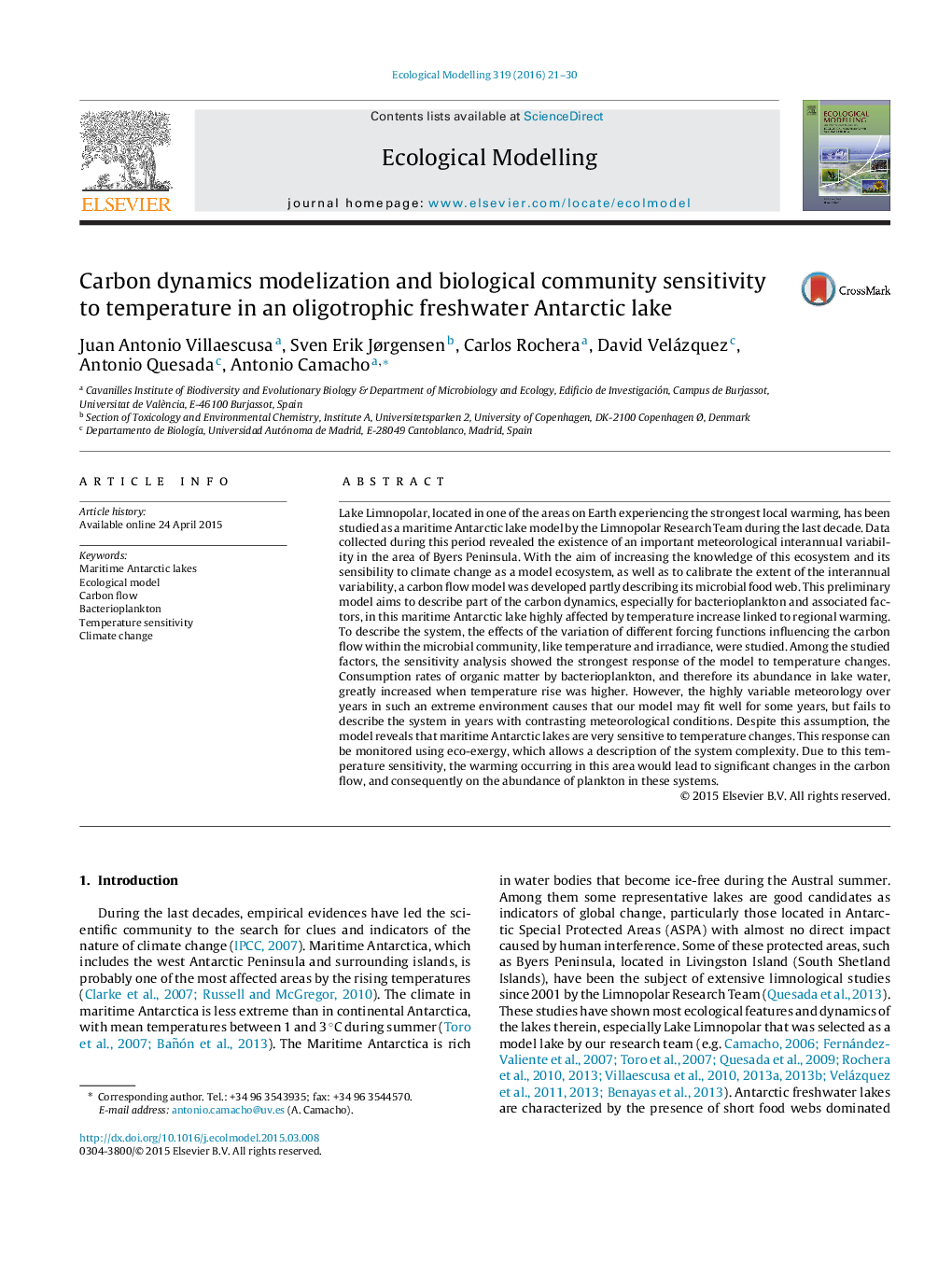| Article ID | Journal | Published Year | Pages | File Type |
|---|---|---|---|---|
| 4375609 | Ecological Modelling | 2016 | 10 Pages |
•We modeled, for the first time, the carbon dynamics of a maritime Antarctic lake.•We simulate changes in the main forcing functions of the lake.•Increases in temperature mainly produce an increase in bacterioplankton densities.•Our model could be very useful to predict future changes in these ecosystems.
Lake Limnopolar, located in one of the areas on Earth experiencing the strongest local warming, has been studied as a maritime Antarctic lake model by the Limnopolar Research Team during the last decade. Data collected during this period revealed the existence of an important meteorological interannual variability in the area of Byers Peninsula. With the aim of increasing the knowledge of this ecosystem and its sensibility to climate change as a model ecosystem, as well as to calibrate the extent of the interannual variability, a carbon flow model was developed partly describing its microbial food web. This preliminary model aims to describe part of the carbon dynamics, especially for bacterioplankton and associated factors, in this maritime Antarctic lake highly affected by temperature increase linked to regional warming. To describe the system, the effects of the variation of different forcing functions influencing the carbon flow within the microbial community, like temperature and irradiance, were studied. Among the studied factors, the sensitivity analysis showed the strongest response of the model to temperature changes. Consumption rates of organic matter by bacterioplankton, and therefore its abundance in lake water, greatly increased when temperature rise was higher. However, the highly variable meteorology over years in such an extreme environment causes that our model may fit well for some years, but fails to describe the system in years with contrasting meteorological conditions. Despite this assumption, the model reveals that maritime Antarctic lakes are very sensitive to temperature changes. This response can be monitored using eco-exergy, which allows a description of the system complexity. Due to this temperature sensitivity, the warming occurring in this area would lead to significant changes in the carbon flow, and consequently on the abundance of plankton in these systems.
